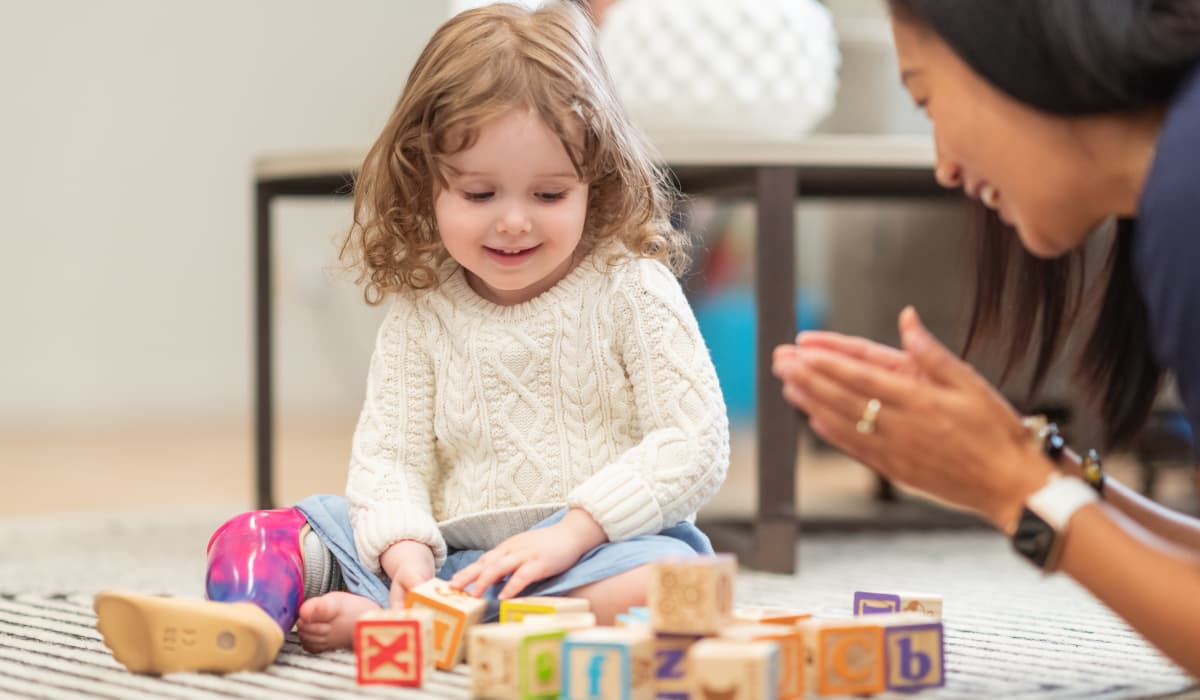The Link Between Plastic Toys and Autism
Do plastic toys cause autism? Discover the truth behind this common myth and the facts you need to know.


Understanding Autism Spectrum Disorder
Autism Spectrum Disorder (ASD) is a complex neurodevelopmental condition characterized by varying degrees of social, communication, and behavioral challenges. Understanding the underlying factors that influence its development is crucial in addressing misconceptions, such as the question, "do plastic toys cause autism?"
Genetics and Autism
Research consistently shows that genetic factors play a significant role in the development of autism. Certain gene mutations and variations have been identified that can increase the risk for ASD. However, it is essential to note that genetics alone cannot fully explain the occurrence of autism. The interplay between multiple genes and environmental factors contributes to the complexity of the disorder.
Genetic InfluenceDescriptionGene MutationsSpecific mutations related to brain development and function.VariantsCommon variations that may influence overall risk.
More information can be found in our article on autistic brain vs normal brain.
Environmental Factors and Autism
In addition to genetic influences, environmental factors also play a role in the development of autism. Prenatal exposure to certain elements, such as maternal infections or medications, may contribute to the risk of developing ASD. However, it is important to clarify that these factors are not direct causes of autism but may interact with genetic predispositions.
Environmental InfluenceDescriptionMaternal InfectionsViral or bacterial infections during pregnancy.MedicationsCertain substances taken while pregnant that may affect fetal development.
The broad range of potential influences on autism emphasizes the need for reliable information and highlights the importance of debunking myths, such as linking plastic toys to autism [1]. By understanding that autism is a lifelong condition shaped by both genetic and environmental factors, one can approach the subject with more clarity and evidence-based reasoning.
For further reading about raising awareness and understanding autism, check our article on raising a child with autism.

Debunking the Myth: Plastic Toys and Autism
Lack of Scientific Evidence
There is a significant amount of misinformation regarding the potential link between plastic toys and autism. Studies have failed to establish a causal relationship between the two, emphasizing a lack of scientific evidence supporting such claims. Both the American Academy of Pediatrics and the Centers for Disease Control and Prevention (CDC) have indicated that no credible evidence exists to suggest that plastic toys contribute to the development of autism [2].
OrganizationFindingsAmerican Academy of PediatricsNo evidence linking plastic toys to autism.CDCNo causal link between plastic toys and autism identified.
Without substantial scientific backing, the idea that plastic toys lead to autism remains a myth. It is essential to rely on verified research and reputable organizations when considering concerns related to child development.
Potential Harmful Chemicals in Toys
While there is no evidence that plastic toys directly cause autism, concerns exist regarding certain chemicals found in plastic products. For instance, recent research has highlighted a potential link between Bisphenol A (BPA) and neurodevelopmental disorders, including autism spectrum disorder (ASD) and ADHD. The study found that children with ASD and ADHD had a reduced ability to efficiently clear BPA from their systems, suggesting that increased exposure could be related to these conditions.
Despite these concerns, the presence of harmful chemicals in toys has been on the decline due to stricter health and safety regulations. Parents are encouraged to take precautions when selecting toys for their children. Options such as choosing products made from natural or organic materials or those approved by the Consumer Product Safety Commission (CPSC) can serve as safer alternatives. It's also advised to avoid vintage or second-hand toys, as they may contain higher levels of potential harmful substances [3].
In conclusion, while being mindful of the materials that toys are made from is important, there is no science to support the notion that plastic toys cause autism. The focus should instead be on ensuring toy safety and quality to promote healthy development.

Influence of Plastic Toys on Autism
The discussion surrounding the potential influence of plastic toys on autism has raised questions about specific chemicals found in these products, particularly phthalates and bisphenol A (BPA). Research continues to explore the complexities involved in the development of autism spectrum disorder (ASD) and how environmental factors, including plastic components, may play a role.
Phthalates and Autism
Phthalates are a group of chemicals used to make plastics more flexible and durable. Some studies have indicated that exposure to phthalates could potentially increase the risk of developing autism. While there has been interest in this area, it is critical to understand that correlation does not imply causation. A comprehensive review of literature conducted in 2018 found no role for phthalates in the etiology of Autism Spectrum Disorder (ASD).
Research has shown that children with autism may exhibit higher levels of phthalates compared to those without the condition. However, it is essential to approach these findings with caution, acknowledging that various genetic and environmental factors contribute to the development of autism, rather than oversimplifying the condition to a single factor.
Study FindingsPhthalate Levels in Children with AutismIncreased phthalate exposure may be seenHigher than non-autistic peersCorrelation observed, but causation uncertainEvidence regarding direct causal link lacking
BPA and Autism
Bisphenol A (BPA) is another chemical often discussed in relation to autism. Recent research has highlighted a potential link between BPA and neurodevelopmental disorders, including autism and attention deficit hyperactivity disorder (ADHD). The study suggested that children with ASD and ADHD exhibited a reduced ability to remove BPA from their bodies, resulting in increased exposure [2].
However, it is necessary to recognize that while these findings are noteworthy, the overarching consensus in the scientific community is that there is no credible evidence supporting a direct causal relationship between BPA and autism. The notion that plastic toys could contribute to the development of autism stems from concerns over chemical exposure, yet scientific studies have consistently debunked these claims. Researchers emphasize the importance of making informed decisions regarding toy selection for children and the value of relying on reputable sources for information.
BPA Research FindingsEffect on AutismPossible link to neurodevelopmental disordersCorrelation, but no causation establishedReduced detoxification capability in children with autismConcern raised but not proven causalNo direct causal link supported by comprehensive studiesEvidence suggests complexity of autism factors
Understanding the influence of plastic toys on autism requires careful consideration of current research. While phthalates and BPA remain topics of discussion, it is vital for parents and caregivers to be aware of the complexities involved in autism's development and not to attribute the condition to singular factors. For more information on supporting children with autism, visit our articles on raising a child with autism or can autistic people have kids?.

Toy Selection for Children with Autism
Choosing the right toys for children with autism can enhance their development and provide appropriate sensory stimulation. Specific considerations, such as sensory needs and motor skills, play a significant role in the selection process.
Sensory Needs
Children on the autism spectrum often face challenges with sensory processing. They may experience difficulties in processing sights, sounds, smells, and textures. Selecting toys that cater to these sensory needs is vital for engaging them in play and aiding their development.
Toys that provide unique textural experiences or stimulate the senses can help children manage their sensory inputs effectively. For example, sensory balls, textured blocks, and calming sound-making toys can be enjoyable and beneficial. Play-based interventions can also support sensory processing as well as enhance social and communication skills in autistic children [4].
Type of ToySensory BenefitSensory BallsTextural explorationTextured BlocksVarying sensationsMusical ToysCalming soundsCause-and-effect ToysEngagement through interaction
Motor Skills and Language Development
Fostering both fine and gross motor skills is crucial for children with autism. Selecting toys that encourage these skills can lead to significant developmental gains. For instance, building sets that require hand-eye coordination, puzzles that promote problem-solving, and toys that involve pushing or pulling can be excellent choices.
Toys can also assist in language development, especially for nonverbal children. Toys that support communication, such as those with buttons that emit sounds or those that match symbols, can be particularly effective. For nonverbal children, these toys allow for expression of needs and offer opportunities for interaction. Encouraging meaningful play through these toys can aid in developing speech and communication skills [4].
Type of ToySkill Development BenefitBuilding SetsFine motor skills and coordinationPuzzlesProblem-solving and cognitive skillsCommunication toysLanguage expression for nonverbal children
By focusing on toys designed for specific sensory needs and skill development, caregivers can not only enhance the play experience for children with autism but also contribute to their overall growth. For accurate information about autism, it is essential to consult reputable sources and healthcare professionals, especially if concerns about a child's development surface [2].

Ensuring Toy Safety
In today's world, ensuring the safety of toys for children has become a significant concern for parents. Awareness about potential toxic chemicals in toys and the regulations surrounding them is crucial for making informed decisions.
Toxic Chemicals in Toys
Children's toys can sometimes contain harmful substances that pose health risks. Two such chemicals frequently found in plastic products are Bisphenol A (BPA) and phthalates.
ChemicalEffect on HealthBPAAltered hormone levels, increased risk of heart problemsPhthalatesComplications with liver, kidneys, lungs, reproductive system
Despite the presence of these chemicals, comprehensive research does not support a direct link between plastic toys containing BPA or phthalates and the development of autism. The condition is complex, with multiple contributing genetic and environmental factors.
Regulations and Compliance
To protect children, various regulatory bodies have implemented safety standards for toys. In the United States, the Consumer Product Safety Commission (CPSC) oversees toy safety regulations. The guidelines cover various aspects, including:
Understanding these regulations is vital for parents selecting toys for their children. By choosing toys compliant with safety regulations, parents can reduce the risk of exposure to toxic chemicals.
In summary, while concerns regarding harmful chemicals in toys exist, rigorous regulations are in place to help ensure the safety of children’s toys. Emphasizing informed choices supports healthy development and well-being for young children. For further information on selecting safe toys, consider checking resources on raising a child with autism or can autistic people have kids?.
Reliable Sources and Recommendations
When addressing concerns regarding autism, it's critical to consult reputable sources and professionals for accurate information. The notion that plastic toys contribute to the development of autism is prevalent. However, no scientific basis supports this claim.
Reputable Organizations
Several reputable organizations offer guidance and insights into autism and child development. The American Academy of Pediatrics and the Centers for Disease Control and Prevention (CDC) have both stated that there is no scientific evidence connecting plastic toys to autism. Parents can find reassurance in knowing that the use of plastic toys does not pose a known risk for autism development. It is essential to seek information from reliable sources to avoid misunderstandings and to support a child's healthy development. For further exploration of autism-related topics, refer to our articles on signs & symptoms of autism in adults and raising a child with autism.
Consulting Healthcare Professionals
In addition to reputable organizations, consulting healthcare professionals can provide personalized advice regarding a child's development. Parents are encouraged to reach out to pediatricians or specialists who can address any concerns about their child's behavior or development. Healthcare professionals can offer accurate assessments and support, ensuring that any developmental challenges are approached effectively.
If parents suspect developmental issues or have specific questions related to their child's condition, seeking guidance from healthcare professionals is crucial. For further reading, visit our article on can autistic people have kids? to learn more about family planning considerations for families on the autism spectrum.
References
[2]:
[3]:
[4]:
Recent articles

ABA Techniques for Picky Eaters: Building Better Habits

How Social School Support Makes School Transitions Easier for Children
